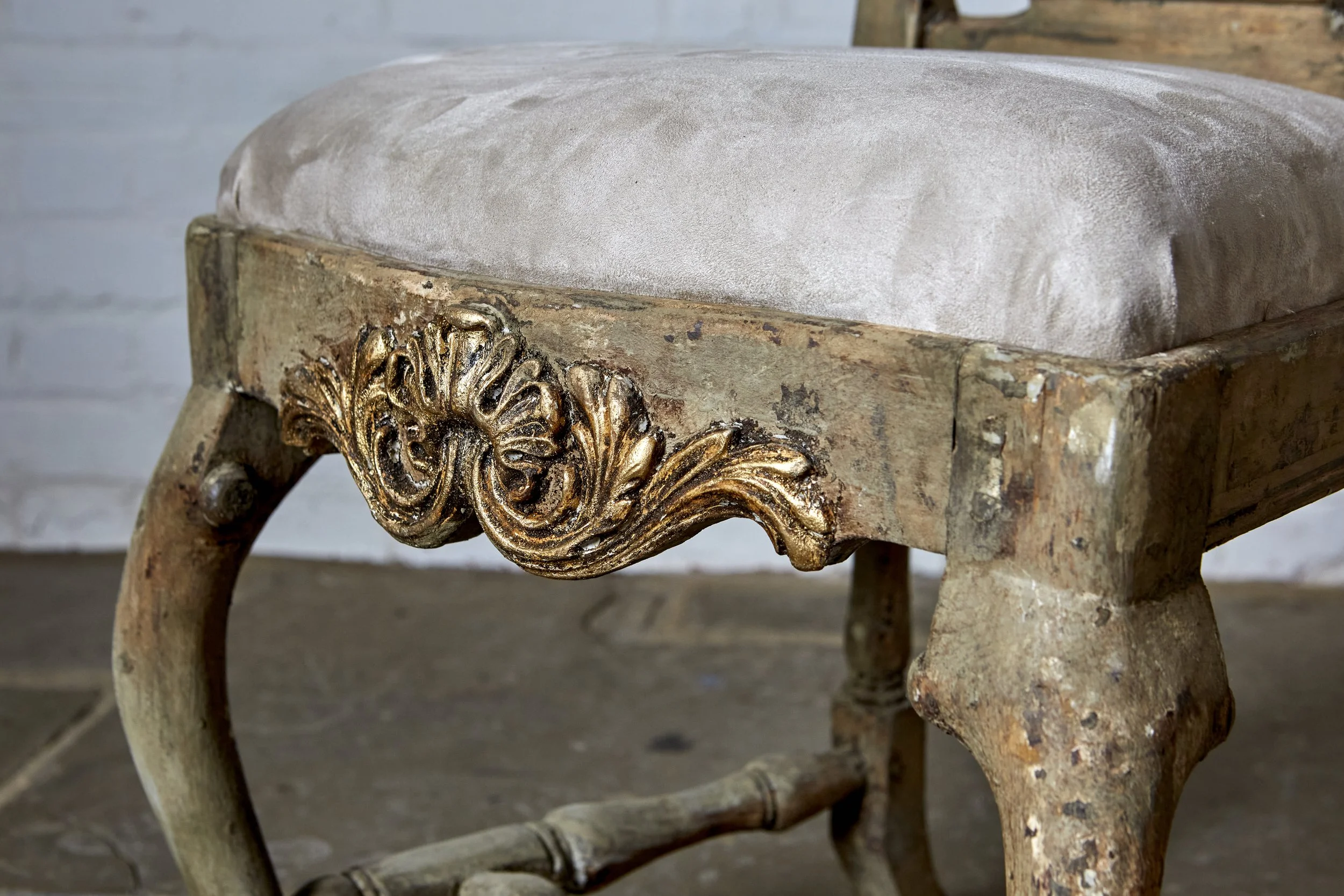Swedish Chairs
I can never really decide whether dining tables and serving tables, or any occasional table are my most favourite things to buy in the antiques world, or whether antique chairs are the winning purchase for me. It’s a close thing but when I look at chairs, English and French chairs have always had a fascination for me, whatever their shape and whatever they are used for – whether dining chairs, occasional chairs or lovely sofas or canapés. But then, I think it could be the Swedish chair that is my current passion.
There are three design periods to be noted when talking about Swedish furniture, all of which flowed from other European styles and tastes through the centuries. The oldest, Baroque period from 1650-1750 was also the longest, providing a century of bold and dramatic style, after which the lighter, decorative Rococo era came along. This was a shorter period of cultural style lasting for 25 years from 1750-1775. Finally, the Gustavian era ran from 1775 to 1810, just nudging into the 19th century created a time of gentle design in furniture and decorative items.
So, interior design styles in Sweden really started coming into their own for the upper and middle classes in the 17th and 18th centuries and the wealthy were keen to decorate their lovely palaces and homes in a lavish style. In 1731, the government banned the import of furniture into Sweden. This was mostly to support Swedish furniture makers and craftsmen tough they were of course by now influenced by French and Italian styles and the King and Queen of that era were themselves big advocates and followers of the French decorative styles in particular.
The word Rococo stems from two French words – coquille (shell) and rocaille (stone) and the very decorative and ornamental style had been prevelant in France for nearly 30 years when it garnered proper interest in Sweden. The master of architecture, Carl Harleman was responsible for the continuation of the building of The Royal Palace in Stockholm which had been started previously and he became one of the most influential figures in architecture and design in the 18th century in Sweden. He very much led the movement of grand Rococo architecture in the country as other palaces and grand houses took on the style too.
The Rococo style is quite hedonistic and ‘flouncy’ but it actually derives too from a natural world of influence from shells, vegetation and floral shapes which we all see in the decorative motifs associated with this design style. Mirrors, armoires and commodes will often feature shell crests and leaf designs. The Swedish versions of Rococo were often more subtle than those of the French where Louis XV had a great influence on frivolity and elaborate furniture style.
The Swedish Rococo chair is of important note in Sweden design history and is of course a very popular style of chair today still. The chairs tend to have simple carved wooden frames with gentle curves and carvings. Open, fiddle-shaped backs with a single, central carved vertical splat are the most prevalent styles and these chairs, both in occasional chair form and dining chair style are typical ones that you will find for sale in antique shops and antique fairs. It is a style of chair that was used in both palaces and country houses alike. The seat width and depth of these dining and occasional chairs is smaller than that of chairs made today as people were smaller.
Swedish furniture of this period is known for its painted style – soft hues of blue, grey, beige and off-white pastels were largely used by their makers and today, when looking for Swedish decorative furniture, you may well come across chairs, tables, stools and cabinets that have been restored and scraped back to their original paint hues. Soft black paint was also a very popular colour to use for desks and commodes as well as tall and short cabinets.
Sweden’s capital of Stockholm bred many furniture makers of fine Stockholm Chairs with Rococo curves and motif designs and the movement spread to other parts of the countryside.
Gustavian design as the latter style gave way to more ‘country style’ less elaborate shapes but nonetheless very beautiful and sophisticated. Still influenced by the reigns of King Louis XV of France and leading onto Kings Gustav III and Gustav IV of Sweden, the style is very much recognisable as Swedish. Indeed King Gustav III spent time visiting France and came back with ideas for his palace and country houses. Gustavian design continued with the use of subtle paint shades but the overall shapes of these pieces of furniture grew into more simple designs than that of the Rococo period.
The Lindome chair is so called as the makers were from the area of the same name located further south in Sweden from Stockholm in the rural countryside. These chairs from the late 18th century and early 19th century were made by farmers who were seeking alternative ways of earning a living due to the poor soil in that region. With wooded areas there providing their source of material, many of these farmers became master craftsmen in furniture making. Lindome chairs are found in pairs as well as occasionally four or six but like all antique furniture, finding complete sets of dining chairs can sometimes lead to a long hunt. Many are restored and scraped back to the original wood, sometimes with elements of paint remaining which adds to their charm.
This is a blog post from Louise Hall Decorative.

